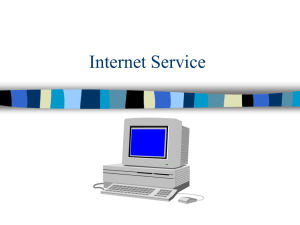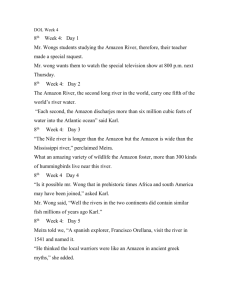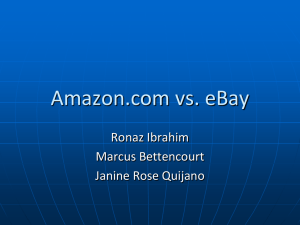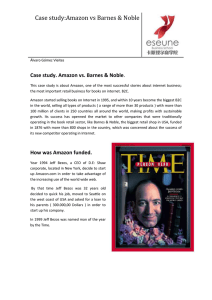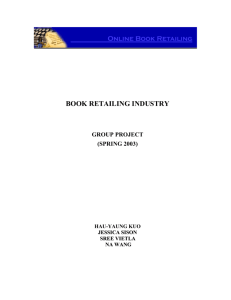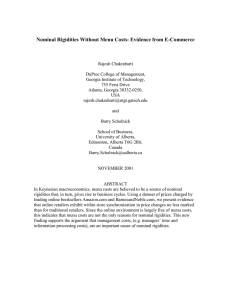BN_vs_Amazon_talking points
advertisement
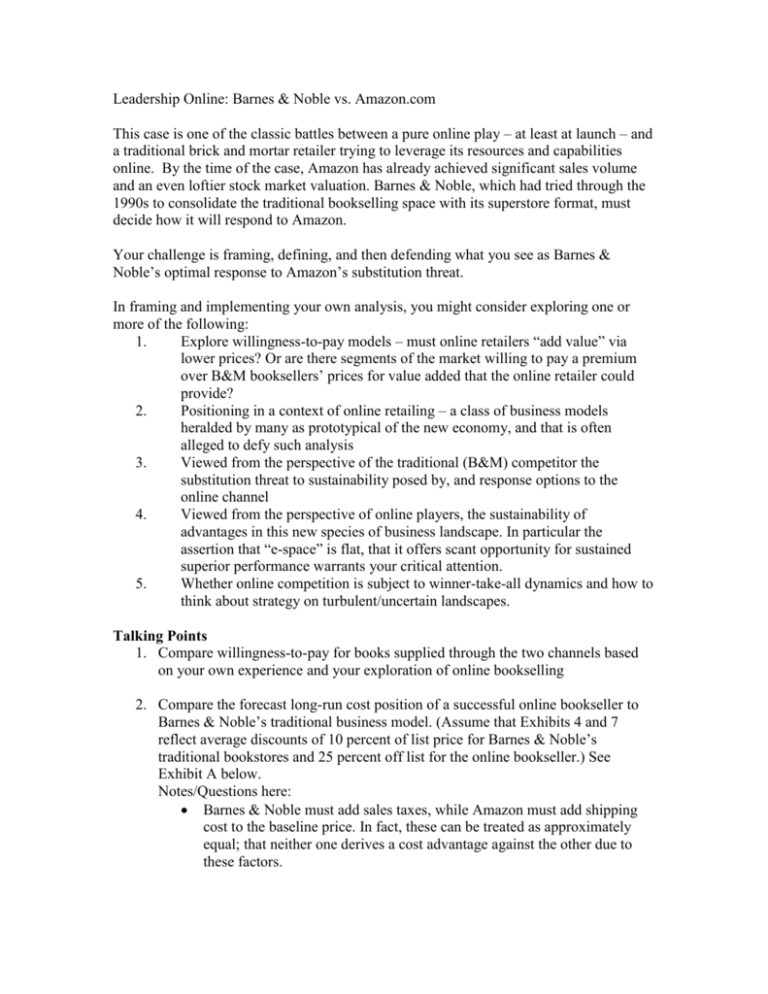
Leadership Online: Barnes & Noble vs. Amazon.com This case is one of the classic battles between a pure online play – at least at launch – and a traditional brick and mortar retailer trying to leverage its resources and capabilities online. By the time of the case, Amazon has already achieved significant sales volume and an even loftier stock market valuation. Barnes & Noble, which had tried through the 1990s to consolidate the traditional bookselling space with its superstore format, must decide how it will respond to Amazon. Your challenge is framing, defining, and then defending what you see as Barnes & Noble’s optimal response to Amazon’s substitution threat. In framing and implementing your own analysis, you might consider exploring one or more of the following: 1. Explore willingness-to-pay models – must online retailers “add value” via lower prices? Or are there segments of the market willing to pay a premium over B&M booksellers’ prices for value added that the online retailer could provide? 2. Positioning in a context of online retailing – a class of business models heralded by many as prototypical of the new economy, and that is often alleged to defy such analysis 3. Viewed from the perspective of the traditional (B&M) competitor the substitution threat to sustainability posed by, and response options to the online channel 4. Viewed from the perspective of online players, the sustainability of advantages in this new species of business landscape. In particular the assertion that “e-space” is flat, that it offers scant opportunity for sustained superior performance warrants your critical attention. 5. Whether online competition is subject to winner-take-all dynamics and how to think about strategy on turbulent/uncertain landscapes. Talking Points 1. Compare willingness-to-pay for books supplied through the two channels based on your own experience and your exploration of online bookselling 2. Compare the forecast long-run cost position of a successful online bookseller to Barnes & Noble’s traditional business model. (Assume that Exhibits 4 and 7 reflect average discounts of 10 percent of list price for Barnes & Noble’s traditional bookstores and 25 percent off list for the online bookseller.) See Exhibit A below. Notes/Questions here: Barnes & Noble must add sales taxes, while Amazon must add shipping cost to the baseline price. In fact, these can be treated as approximately equal; that neither one derives a cost advantage against the other due to these factors. Is the proper comparison columns [1] and [4], of columns [2] and [3]? Think about it before launching into the cost comparison analysis. According to Exhibit A, does the online channel enjoy a significant operating cost advantage? 3. Assess Barnes & Noble’s response to the substitution threat from Amazon. How did Amazon respond in turn, and to what net effect? Options: ranked by degree of implied commitment to the old business model Not responding/harvesting – business as usual or simply selling B&N Fighting through upgrading B&M model or switching completely to the online model Straddling (compete offline but begin competing online as well)/recombining – design the online business model that melds elements of its traditional model – piggybacking on the scale and warehousing infrastructure already build up for B&N’s traditional model - with the new possibilities offered by the Internet; plus match Amazon’s discount – attempting to restrain Amazon from “getting big fast”? 4. Who will be the online leader? Will it ever make much money selling books, or must the model be expanding into a diversified Web portal where the market can source a myriad of products and even services? Exhibit A Disaggregated Cost Comparisons of Online vs. Offline Business Models* Amazon B&N forecast, 2001 adjusted for adjusted for 10% discount 25% discount Amazon forecast, 2001 Amazon, 1996 [3] 75 56.9 0 11 7.7 [4] 100 75.8 0 14.7 10.3 [5] 100 78 0 60 38.7 Product Development 2.4 3.2 14.7 General and Administrative 0.9 1.2 6.6 7.2 9.6 -38 Category Revenues Cost of Sales Rental Expense SG&A** Sales and Marketing Operating Income*** B&N, 1996 [1] 100 64.1 9.2 18.6 4.9 [2] 90 57.7 8.3 16.7 4.4 *All figures in the table are percentages, with column [2] = .90[1]; and [3] = .75[4] reflecting each channel's standard discount. The cost and operating income data equal the percent of revenue accounted for by each category. **SG&A: Sales, General & Admin Costs - aggregated for B&N; disaggregated for Amazon ***Excludes operating income from superstores. Thus cost and operating income do not sum to 100% and 90% respectively in columns [1] and [2].


